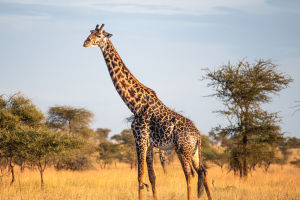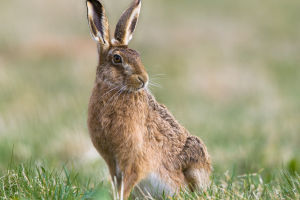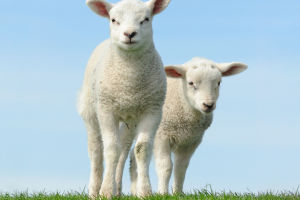The Scarlet Macaw (Ara macao) is one of the most striking and recognizable birds in the world, known for its vibrant plumage and dynamic presence in the tropical rainforests of Central and South America.
With its bright red feathers, complemented by splashes of blue and yellow, the Scarlet Macaw is a true icon of the wild, embodying the beauty and diversity of the natural world.
Physical Characteristics
The Scarlet Macaw is a large parrot, measuring about 32 inches (81 cm) in length, including its long tail, and weighing between 2.2 to 2.5 pounds (1 to 1.2 kg). Its bold red body is accentuated by blue wings and tail feathers, with yellow accents on the wings. The face is bare and white, with a strong, curved beak that is perfect for cracking open nuts and seeds, which make up a significant part of its diet.
The macaw’s plumage is not only beautiful but also functional. The bright colors help these birds blend into the colorful environment of the rainforest, offering a degree of camouflage amidst the vibrant foliage. Additionally, the strong contrast in colors plays a role in communication among macaws, helping them recognize one another from a distance.
Habitat and Distribution
Scarlet Macaws are native to the humid lowland rainforests of Central and South America, ranging from southern Mexico to the Amazon Basin in Brazil, including parts of Peru, Bolivia, and eastern Ecuador. They thrive in areas with tall, mature forests where they can find the fruits, nuts, and seeds they depend on.
These birds are highly social and are often seen in pairs or small flocks. During the day, they can be spotted flying high above the treetops, their loud, raucous calls echoing through the forest. Their strong wings allow them to cover large distances in search of food, and they are known to travel up to 15 miles (24 km) in a single day.
Diet and Behavior
Scarlet Macaws are omnivorous, with a diet that primarily consists of fruits, nuts, seeds, and berries. They are particularly fond of figs and palm fruits, which are abundant in their natural habitat. Macaws have a unique behavior known as geophagy, where they consume clay from riverbanks. This behavior is believed to help neutralize toxins found in some of the seeds and unripe fruits they eat, making their diet safer.
In addition to their diet, Scarlet Macaws are known for their strong pair bonds. They mate for life, and pairs are often seen flying together, grooming each other, and engaging in synchronized behaviors. This strong bond is vital for raising their young, as both parents share the responsibilities of incubating eggs and feeding the chicks.
Reproduction and Lifespan
Scarlet Macaws typically breed during the early part of the rainy season, which varies depending on their location. They nest in tree cavities, where the female lays two to three eggs. The incubation period lasts about 24 to 26 days, with the female doing most of the brooding while the male provides food.
The chicks are born blind and featherless, completely dependent on their parents. They grow rapidly, and by the time they are about three months old, they are ready to leave the nest. However, they continue to rely on their parents for food and protection for several more months.
In the wild, Scarlet Macaws can live up to 40 to 50 years, though some individuals in captivity have been known to live even longer, sometimes reaching 75 years or more.
Conservation Status
The Scarlet Macaw is listed as "Least Concern" by the International Union for Conservation of Nature (IUCN), but this status does not tell the whole story. While the species is not currently facing extinction, it is under threat from habitat loss, illegal pet trade, and hunting. Deforestation in the Amazon and other rainforests is reducing the available habitat for these birds, and illegal poaching for the exotic pet market remains a significant problem.
Conservation efforts are in place to protect the Scarlet Macaw, including habitat preservation and breeding programs. Ecotourism also plays a role in their conservation, as it encourages local communities to protect the natural environment that supports these beautiful birds.
The Scarlet Macaw is more than just a symbol of the tropical rainforest; it is a testament to the complexity and beauty of the ecosystems it inhabits. Protecting this species is not just about saving a single bird; it’s about preserving the intricate web of life that sustains the rich biodiversity of the rainforest. As you continue to understand and appreciate the Scarlet Macaw, you are reminded of your responsibility to protect the natural world for future generations.


